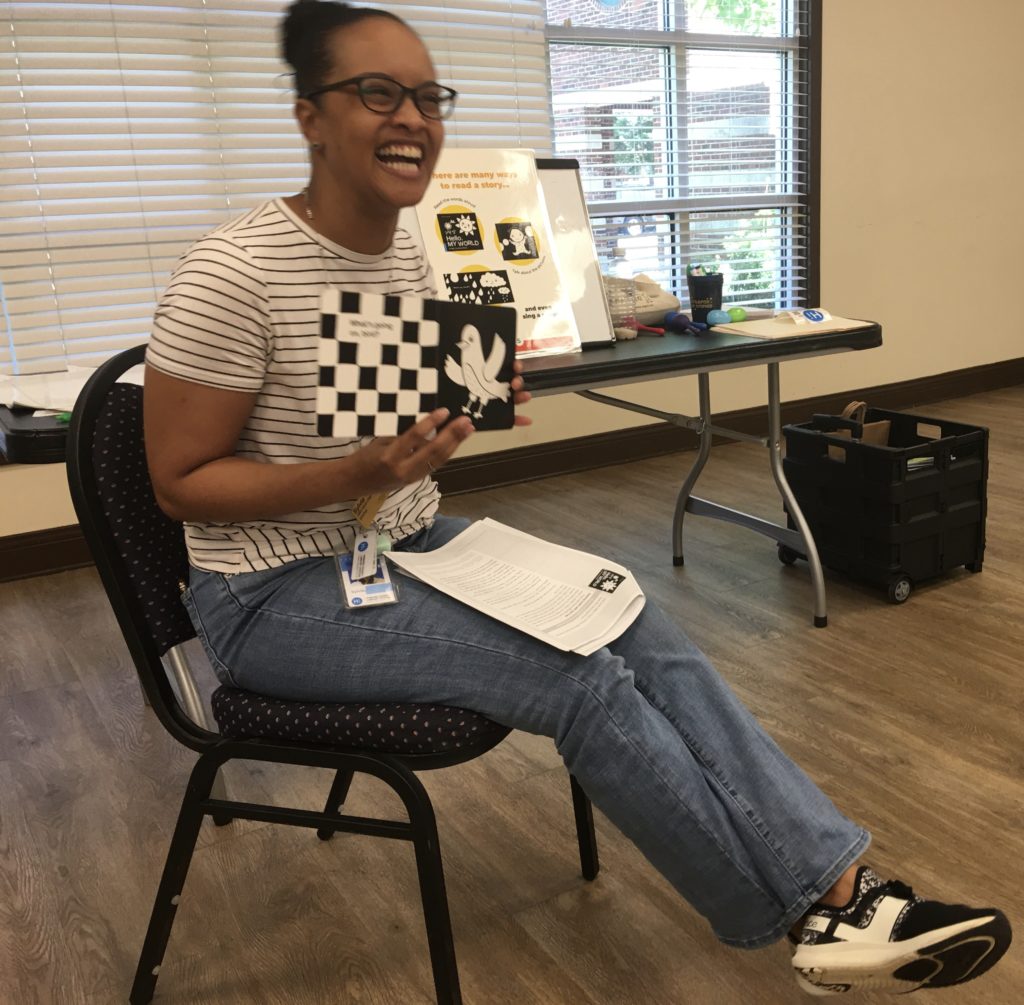Last week, Dorothy Stoltz and I travelled to Cecil County, Maryland to observe their first Mother Goose on the Loose Hatchlings: Ready to Hatch program. Librarian Summer Rosswog presented the program to a sizeable group of expectant parents.
Hatchlings uses the board book, Hello, My World as an example of a high contrast book that infants can see, and the facilitator models how the book can be shared with infants in different ways: talking about the pictures, singing a song about them, asking questions and reading the book aloud.
Taylor O’Bryan is “The Ginger Goose”, an antepartum & postpartum doula who attended the session to talk about the services she offers. (If you are interested, check her out on www.thegingergoose.com.) Summer had just finished describing the different ways to share Hello, My World listed above when Taylor contributed to the conversation.
Taylor shared that she had used Hello, My World almost every day with her daughter when she was young, and they created a routine that had a song or activity for each page:
Hello Sun – Sing: “You are my Sunshine”
What’s going on, bird? – Ask: “What does a bird say?” “Chirp, chirp, chirp…” (x3)
Bonjour, flowers – Count to three in French: “un, deux, trois” (x3)
What’s up clouds? – Sing: “Rain, Rain, Go Away”
Hola, baby – Count to three in Spanish, “uno, dos, tres” (x3)
Hello, toys – Sing: “The ABC Song”
Good to see you, puppy – Ask: “What does a puppy say?” “Woof, woof.” (3x)
Ni hao, stars – Sing: “Twinkle, Twinkle, Little Star”
Looking good, moon – Sing: “Skinamarink a dink…”
I thought this was a really cool idea and asked Taylor if I could share it with other librarians. She ready agreed, and even wrote out her schedule of activities for each page for me.
Enjoy!

Howard County Library System, Miller Branch shares “Hello, My World”
during a Hatchlings session.
